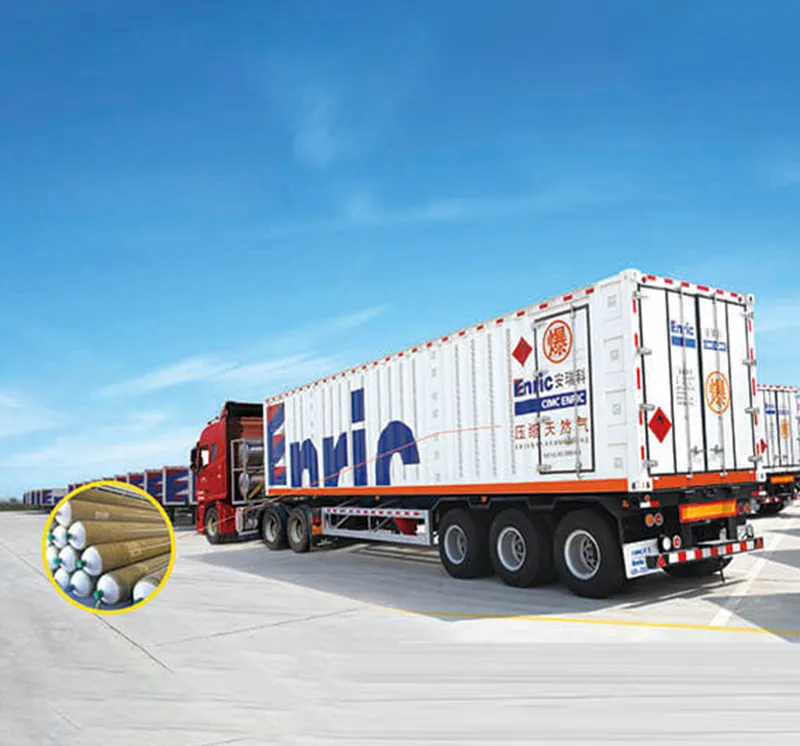Natural gas (CNG) has become a cleaner and more sustainable alternative to traditional fossil fuels and is being used for transportation and energy production due to its lower emissions and cost effectiveness. When it comes to the storage and transportation of CNG, there are two main technologies commonly used: CNG pipe skids and CNG compressors. Both options have their advantages and disadvantages, and the choice between them depends on various factors such as specific application requirements, storage capacity needs and cost considerations. In this article, we will compare CNG pipe skids and CNG compressors to determine which option may be more suitable for the storage and transportation of natural gas.
CNG Pipe Skids:
Natural gas skids are mobile and compact systems that store natural gas in high-pressure pipes or cylinders made of lightweight composite materials. These skids are designed to be transportable, allowing for flexible deployment and use in different locations. They are commonly used in NGV refueling stations, off-grid power generation, remote industrial operations and mobile applications such as buses and trucks.
One of the main advantages of CNG skids is their mobility and ease of deployment. They can be easily transported to different locations as needed, making them suitable for remote areas or temporary operations where fixed CNG infrastructure may not be feasible or cost effective. CNG pipeline skids are also known for their safety features, with advanced safety systems that ensure safe operation and prevent accidents. The composite materials used in their construction are corrosion resistant and can withstand harsh environmental conditions, making them durable and reliable in long-term use.
Another significant advantage of CNG pipe skids is their environmental impact. Compared to traditional fossil fuels, CNG is a cleaner burning fuel, emitting lower levels of greenhouse gases and pollutants. When used as a transportation fuel, CNG can significantly reduce emissions of nitrogen oxides (NOx), particulate matter (PM) and carbon dioxide (CO2), all of which are major contributors to air pollution and climate change. The use of CNG tube skids for CNG transportation can help reduce the carbon footprint of the transportation sector and contribute to a more sustainable future.

However, CNG compressors also have some disadvantages. One of the main disadvantages is their fixed location, which limits their flexibility in terms of deployment compared to CNG pipe skids. Once installed, CNG compressors cannot be easily moved to a different location, which may not be feasible or cost effective in some cases. This can be a disadvantage in remote areas or temporary operations where a mobile solution such as a CNG pipe skid may be more appropriate.
Another disadvantage of CNG compressors is their higher capital cost compared to CNG pipe skids. Stationary CNG compression infrastructure requires significant investments in installation, equipment and infrastructure development, which may not be economically feasible for smaller operations or remote areas with low demand. CNG compressors may also have higher operating costs due to their continuous operation and higher energy consumption.
In terms of environmental impact, CNG compressors are generally considered cleaner than conventional fossil fuel compressors, but they still emit some level of greenhouse gases and pollutants. emissions from CNG compressors may vary, depending on the efficiency of the compressor and the source of electricity used to drive the compressor. However, CNG compressors may not provide the same level of emission reductions compared to CNG tube skids, which store natural gas in a lightweight composite tube and do not require continuous operation.
Conclusion:
In summary, both CNG pipe skids and CNG compressors have their advantages and disadvantages when it comes to natural gas storage and transportation. CNG pipeline skids are mobile, compact, and offer deployment flexibility, making them suitable for remote areas or temporary operations. They also have lower capital costs, lower environmental impact, and provide operational cost savings.
CNG compressors, on the other hand, offer higher storage capacity, reliability and efficiency, making them suitable for high-demand operations or applications that require a continuous and sufficient supply of natural gas. However, they have higher capital costs, limited deployment flexibility, and potentially greater environmental impact compared to CNG pipe skids.
The choice between CNG pipe skids and CNG compressors depends on a variety of factors such as specific application requirements, storage capacity needs, cost considerations and environmental impacts. It is important to carefully evaluate these factors and select the option that best meets the specific application requirements, taking into account factors such as mobility, storage capacity, reliability, cost and environmental impact.
